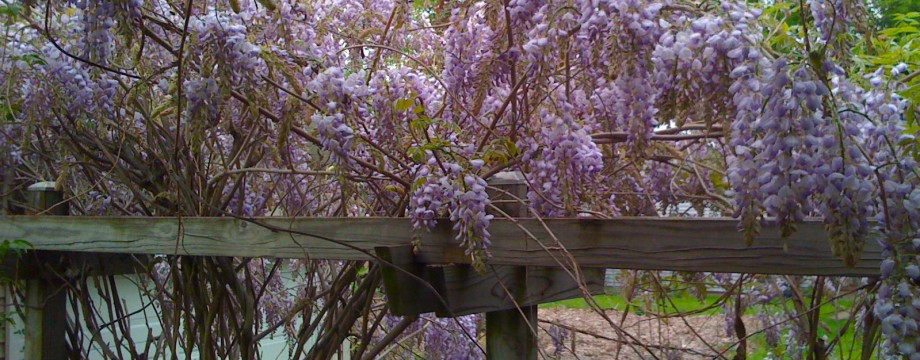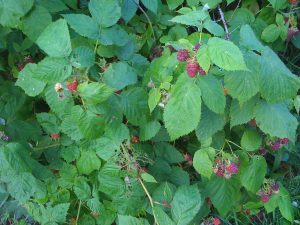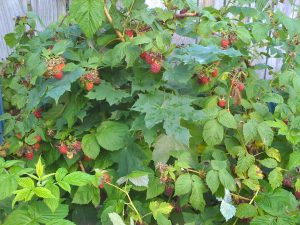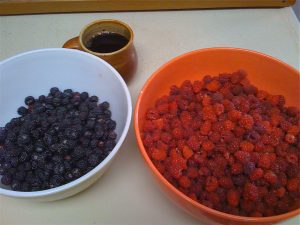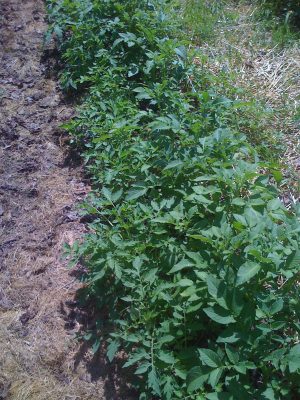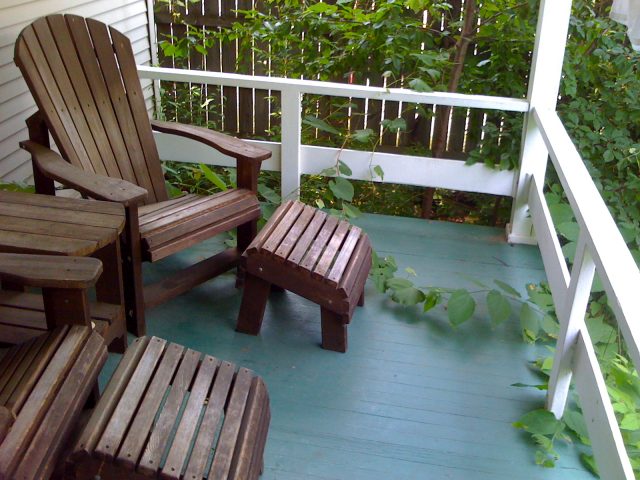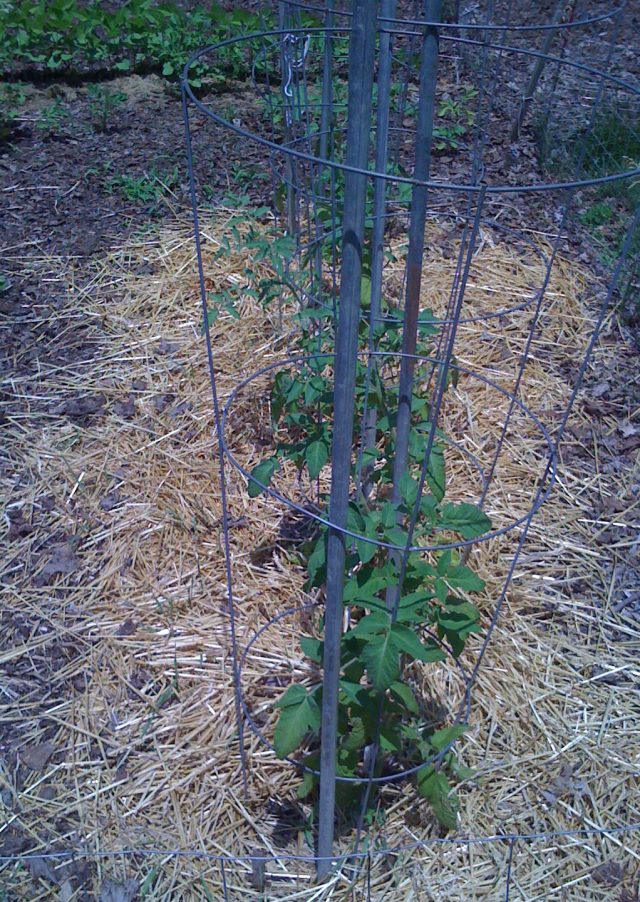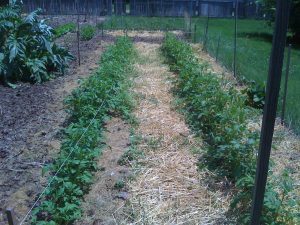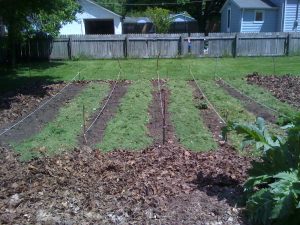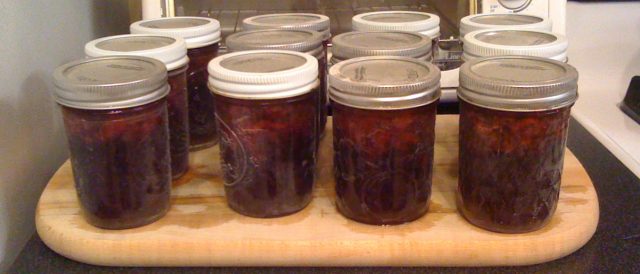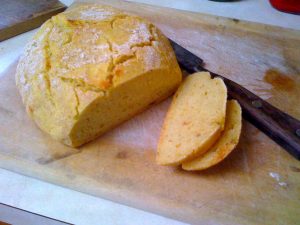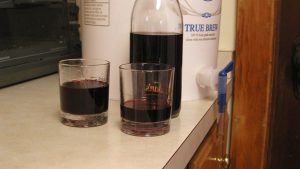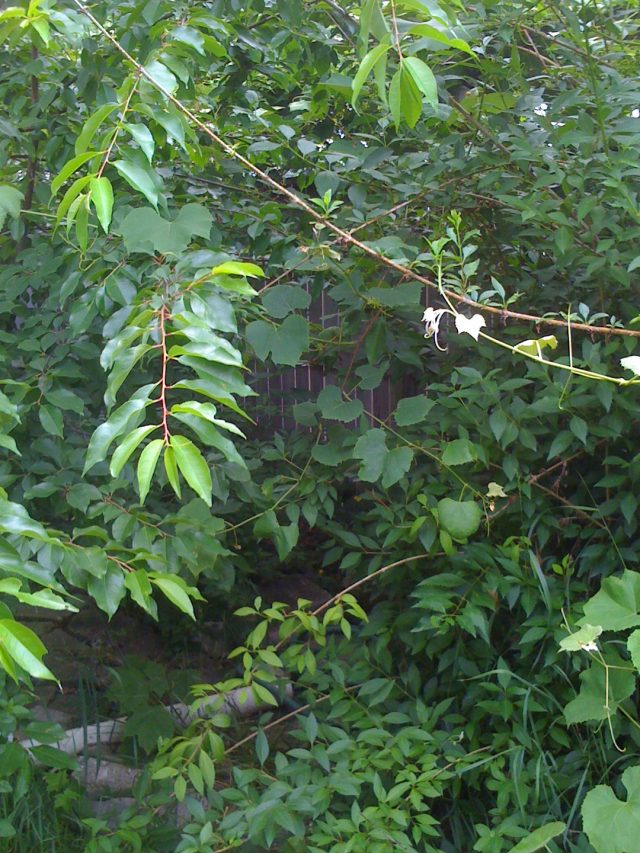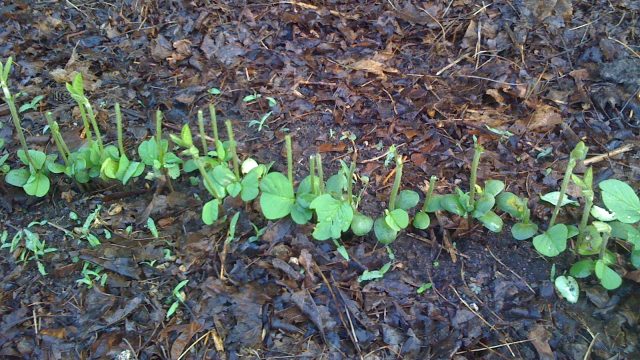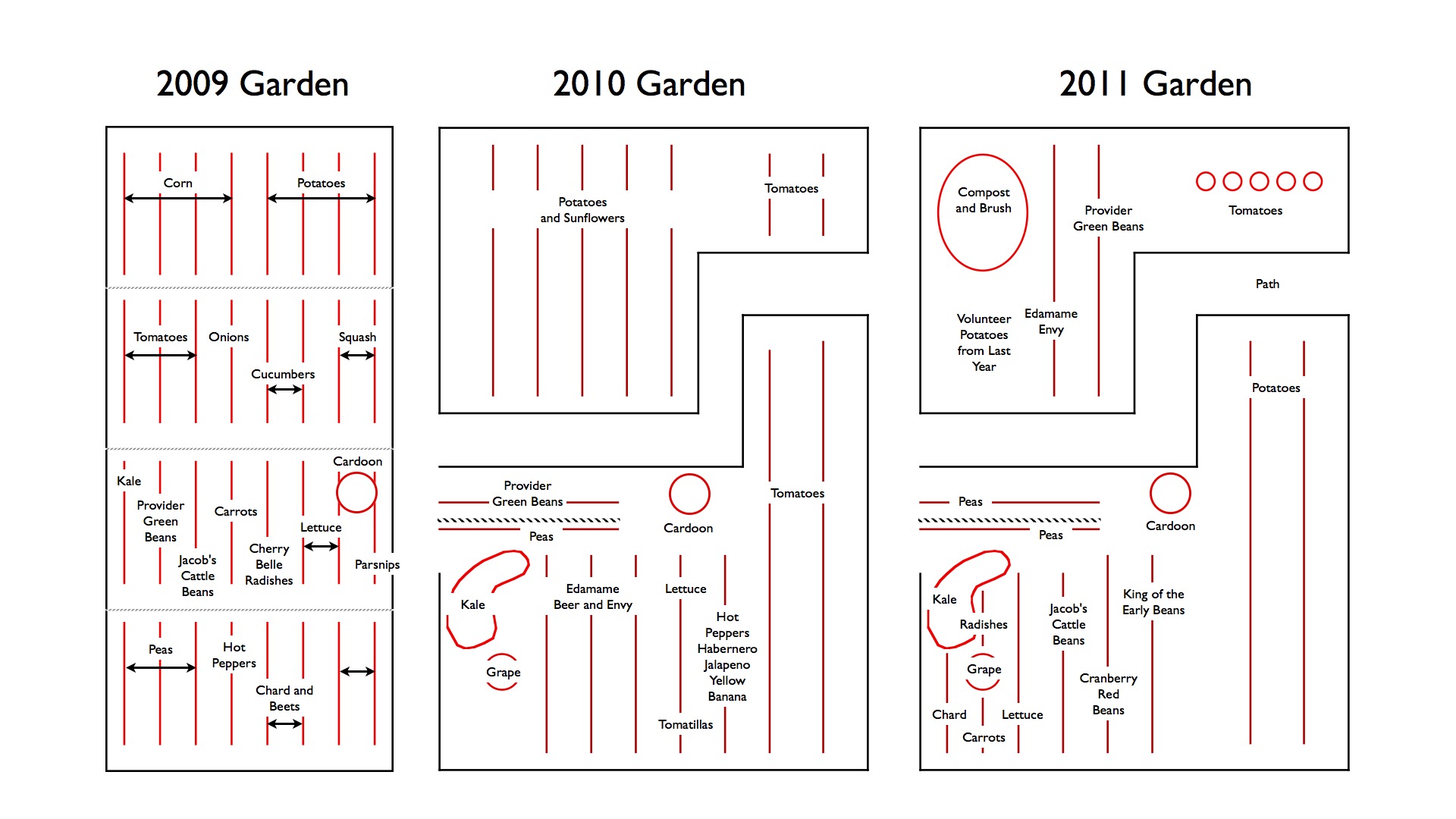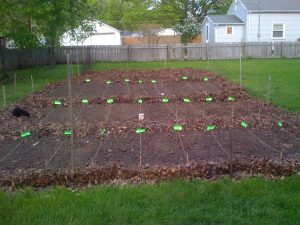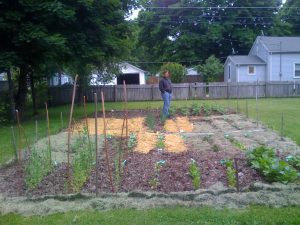When I was little, I would get a treat every summer. Once, every summer, my mum would buy me a half-pint of fresh raspberries and I would eat the entire half-pint in one sitting. Back then, raspberries were only available in season, and then, as now, they were very expensive. So I would get just one half-pint a summer. Because of this, or maybe in spite of this, raspberries became my very favorite summer fruit.
So, when I finally had a yard of my own, I was delighted to get some raspberry starts from a friend. I planted them in my small yard behind the little garden beds that I dug. But soon I discovered a downside to raspberries, at least in this part of Indiana. Raspberries bushes seem to be a favorite habitat and food for Japanese Beetles. Just about the time that the fruit was ripe, the Japanese Beetles would descend in droves, buzzing and making it mighty unpleasant for picking raspberries or any other garden produce for that matter.
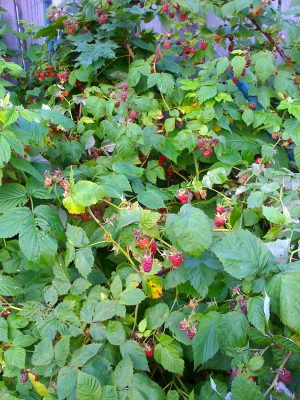
So eventually I decided that I wanted to move those raspberry bushes somewhere far away from the rest of my garden beds. I still wanted raspberries, just not the accompanying beetles bothering me in my garden. So I dug up the vines and transplanted them outside the fence along the alleyway. Each summer I would try to pick as many raspberries as I could before the beetles came. Surprisingly, there were a few years when there were not very many beetles and I was able to pick raspberries to my heart’s content. But, in other years, the beetles were bothersome. I suspected that the spring weather had something to do with the number of beetles, but I did not keep any records.
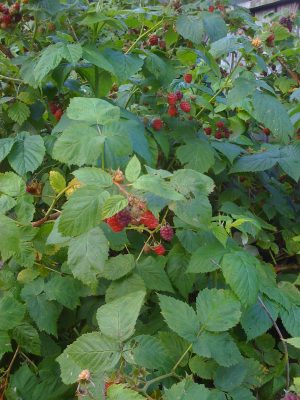
One year I tried a technique to force my raspberries to bear in late summer rather than early summer. I cut them all back at the beginning of the spring. True enough, I did get a crop in the late summer, but it wasn’t as abundant as I wanted.
Finally, a couple of years ago I made my peace with the beetles. I decided that I can still pick my berries, and just not get bothered by the beetles. What did it matter that these beetles are buzzing around my head? I am not really bothering them and they are not really bothering me; they are just living their little beetle lives and doing what beetles do and I can do whatever I do and we can live in harmony. I picked raspberries and the beetles buzzed.
Last year, other things drew my attention and I did not tend to the raspberries. So this year they spread and filled up that space on the other side of the fence. And now I have raspberries. I have LOTS of raspberries.
I have more raspberries than I’ve ever had before. Before, I had enough so that I could eat my fill and maybe have just a little bit to share. But this year as I am picking, I am eating my fill and yet my bowls are filling up with the raspberries I pick.
I have so many raspberries that I can even think of preserving some.
And so, I made jam.
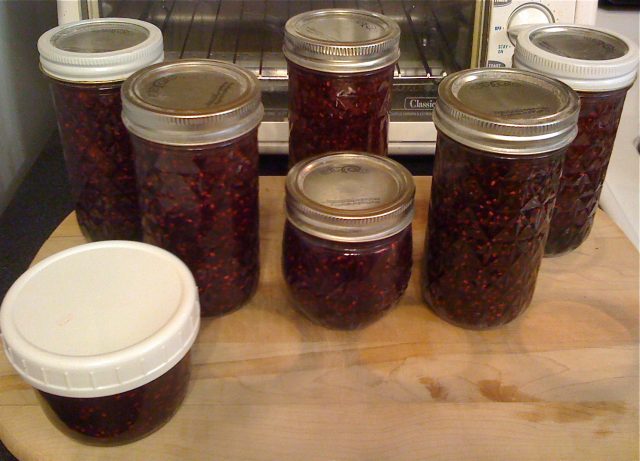
Why so many raspberries? I wonder. Maybe because I made peace with the Japanese beetles?
